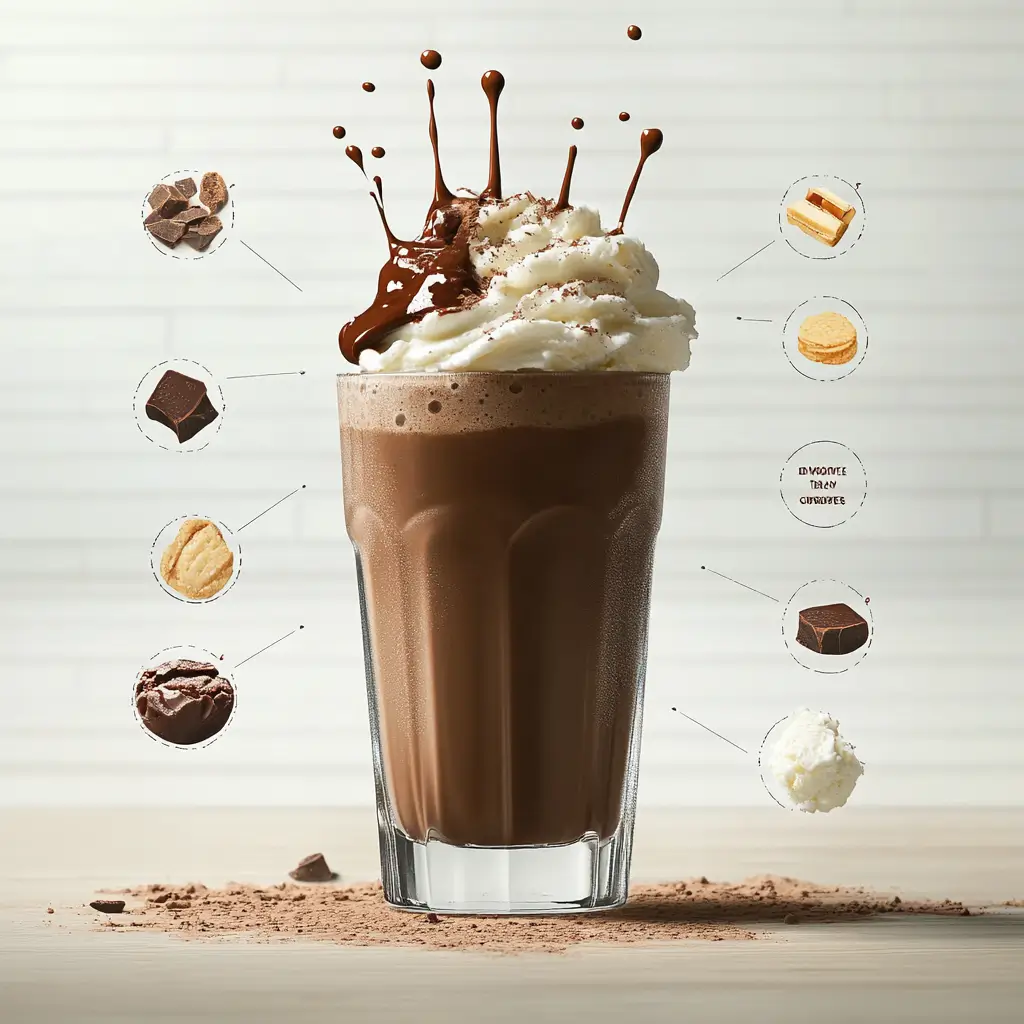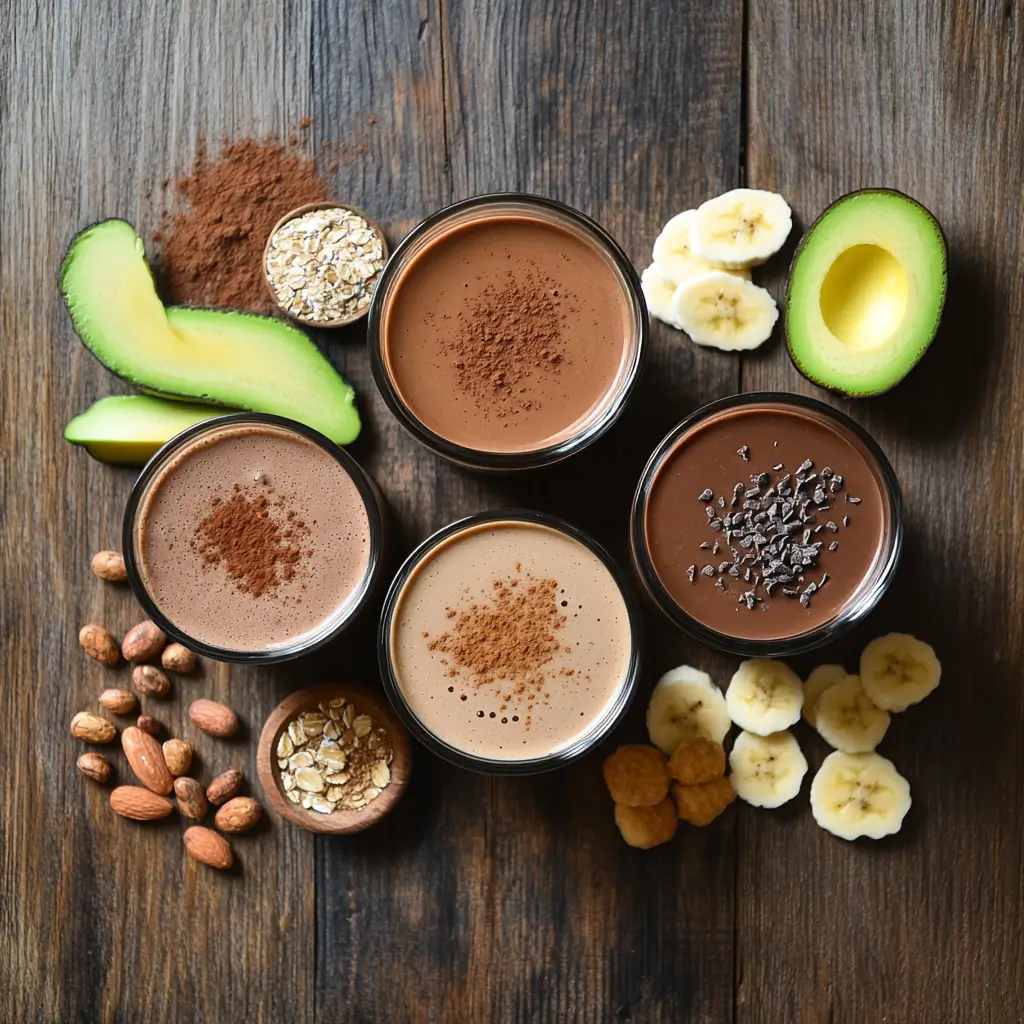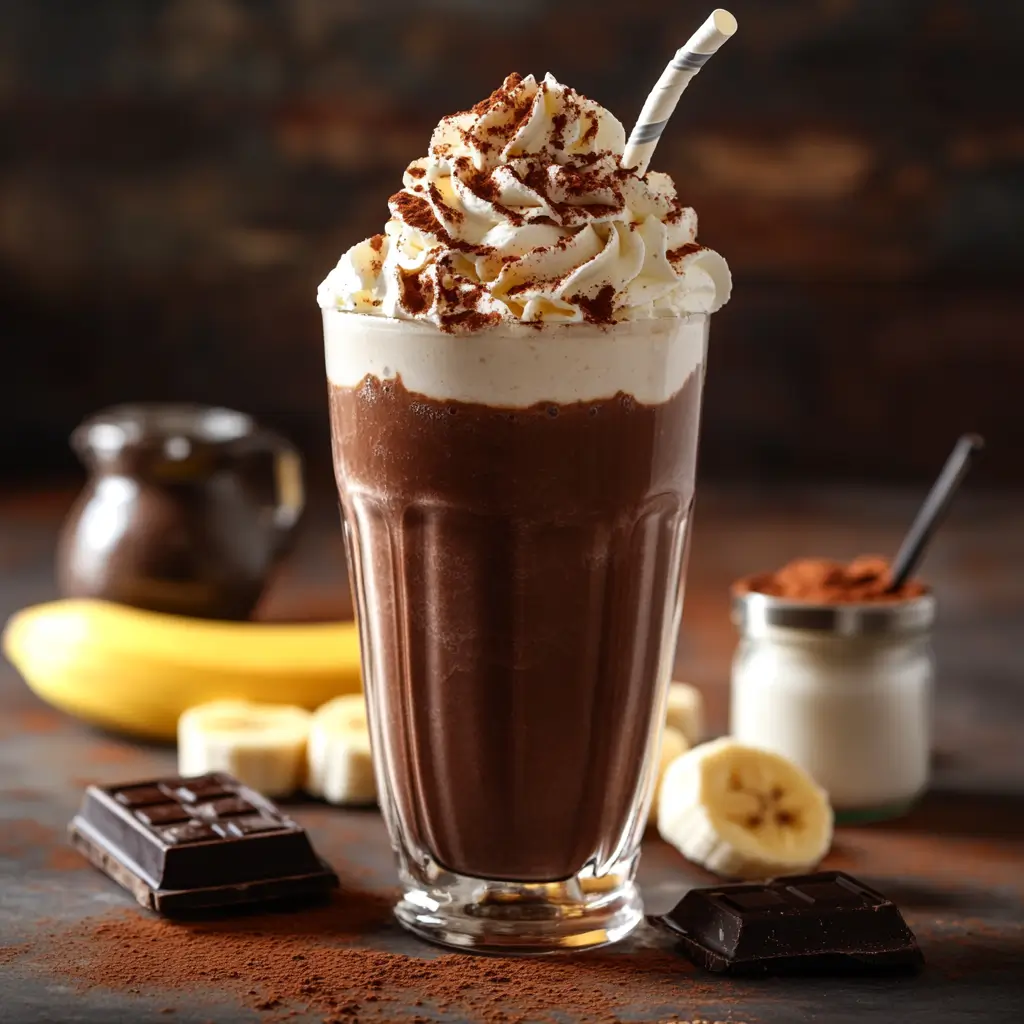Table of Contents
Introduction: Can You Really Have a Chocolate Milkshake on a Diet?
You know that feeling when you’re craving something sweet but also trying to stay on track with your diet? The struggle is real! Chocolate milkshakes are one of those indulgent treats that can feel like a guilty pleasure. But what if I told you that a chocolate milkshake could actually fit into a balanced diet?
Before you get too excited and start blending, let’s break it down. Are all chocolate milkshakes created equal? Definitely not. Some versions are packed with sugar, unhealthy fats, and more calories than a full meal, while others can be surprisingly nutritious and satisfying.
If you’re wondering whether you can enjoy a chocolate milkshake while keeping your diet in check, you’re in the right place. Let’s take a closer look at the nutrition, potential benefits, and how to make a healthier version at home.
Is Chocolate Milkshake Healthy? A Closer Look at the Nutrition
Calories and Macronutrients in a Traditional Chocolate Milkshake

A typical fast-food chocolate milkshake is often loaded with sugar, cream, and artificial syrups. Here’s what you might be consuming in just one medium-sized shake (about 16 oz):
| Ingredient | Calories | Carbs (g) | Protein (g) | Fat (g) |
|---|---|---|---|---|
| Whole Milk (1 cup) | 150 | 12 | 8 | 8 |
| Chocolate Syrup (2 tbsp) | 110 | 26 | 1 | 0 |
| Ice Cream (½ cup) | 150-200 | 18-22 | 3-4 | 7-12 |
| Whipped Cream (Optional) | 50-100 | 5-8 | 0 | 5-10 |
| Total | 450-600 | 60-80 | 10-12 | 20-30 |
That’s a pretty hefty number, especially if you’re watching your calorie intake. But that doesn’t mean you have to give up on chocolate shakes altogether!
Negative effects of high-sugar drinks on health
Breaking Down the Sugar Content
One of the biggest concerns with chocolate milkshakes is the high sugar content. A standard shake can pack anywhere from 50 to 80 grams of sugar—that’s double the recommended daily intake for most adults! Consuming this much sugar in one sitting can:
- Spike your blood sugar levels, leading to energy crashes.
- Trigger cravings for more sugary foods, making it harder to stay on track.
- Lead to fat storage, especially if consumed on an empty stomach.
🔎 Better Choices: If you’re watching your sugar intake, unsweetened cocoa powder or dark chocolate (at least 70% cocoa) can provide the chocolatey taste without the sugar overload.
What About Different Types of Milk?
The type of milk you use in a chocolate shake dramatically affects the calorie and nutrient content.
| Milk Type | Calories (per cup) | Protein (g) | Fat (g) | Best For |
|---|---|---|---|---|
| Whole Milk | 150 | 8 | 8 | Creamy texture, higher calories |
| Skim Milk | 90 | 8 | 0 | Lower fat, lower calories |
| Almond Milk | 30-50 | 1-2 | 2-3 | Low-calorie, dairy-free |
| Oat Milk | 120 | 3 | 5 | Creamy, dairy-free option |
| Coconut Milk (canned) | 200-450 | 2-3 | 20-50 | High-fat keto-friendly option |
Can a Chocolate Milkshake Fit into a Diet?
When Is a Chocolate Milkshake a Smart Choice?
Believe it or not, there are times when a chocolate milkshake can actually be helpful, not harmful:
✅ Post-Workout Recovery – A chocolate milk-based shake can provide protein and carbs to refuel muscles.
✅ Occasional Treat – Having a milkshake once in a while won’t ruin your diet, as long as it fits within your daily calorie intake.
✅ Protein Boost – If made with Greek yogurt or protein powder, a milkshake can be a great way to increase your protein intake.
Protein: The Secret to a More Satisfying Milkshake
One key ingredient that can make or break a milkshake’s impact on your diet is protein. High-protein foods help keep you full longer, curb sugar cravings, and prevent overeating. If you’re making a chocolate milkshake at home, consider adding protein powder, Greek yogurt, or peanut butter to boost the protein content.
Studies show that meals with at least 20 grams of protein can significantly reduce hunger hormones, meaning a protein-packed shake could be just as filling as a small meal. If your milkshake has mostly sugar and fat, though, it won’t keep you full for long and may lead to snacking soon after.
Portion Control and Smart Timing
If you love chocolate milkshakes, portion size is everything. Instead of drinking a large fast-food milkshake, opt for a homemade 8-oz portion.
⏳ Best Times to Have a Milkshake Without Ruining Your Diet:
- Post-Workout: If you make a high-protein version, it can help muscle recovery.
- As a Dessert, Not a Meal Replacement: Drinking a high-calorie shake instead of a balanced meal can leave you feeling unsatisfied later.
- Mid-Afternoon Snack: Helps curb cravings before dinner without ruining your appetite.
When Should You Skip It?
🚫 Fast-Food Versions – Many commercial milkshakes are high in sugar and artificial additives.
🚫 Late-night cravings – Drinking a milkshake before bed can add extra calories without burning them off.
🚫 Everyday Habit – If you’re having one daily without adjusting the rest of your meals, it might lead to weight gain.
How to Make a Healthy Milkshake
Low-Calorie Milkshake Recipe

You don’t have to give up chocolate milkshakes—just make a better version! This homemade chocolate shake is lower in calories but still rich and satisfying.
Ingredients:
✔ 1 cup unsweetened almond milk (or skim milk)
✔ 1 frozen banana (adds natural sweetness)
✔ 1 tbsp unsweetened cocoa powder
✔ 1 scoop protein powder (optional, for extra protein)
✔ ½ tsp vanilla extract
✔ Ice cubes
Instructions:
- Blend all ingredients until smooth.
- Add more ice for a thicker texture.
- Pour into a glass and enjoy guilt-free!
📌 Calories: ~150-200 per serving
💡 Want it extra creamy? Add a tablespoon of peanut butter or Greek yogurt!
Keto-Friendly Chocolate Shake (Low-Carb Option)
✔ 1 cup unsweetened almond milk
✔ 1 tbsp unsweetened cocoa powder
✔ ½ avocado (adds creaminess and healthy fats)
✔ ½ tsp vanilla extract
✔ 2 tsp monk fruit sweetener or stevia
✔ Ice cubes
📌 Calories: ~180 per serving
💡 This shake is high in healthy fats and very low in sugar—perfect for low-carb diets!
Dairy-Free Chocolate Banana Smoothie
✔ 1 cup oat milk or coconut milk
✔ 1 frozen banana
✔ 1 tbsp cocoa powder
✔ 1 tbsp peanut butter
✔ Ice cubes
📌 Calories: ~220 per serving
💡 Great for those who are lactose intolerant!
Chocolate Milkshake vs. Other Drinks: Which One Is Better?
If you’re wondering how a chocolate milkshake compares to other sweet drinks, here’s a quick breakdown:
| Drink | Calories | Sugar (g) | Protein (g) | Best For |
|---|---|---|---|---|
| Regular Milkshake | 400-600 | 60-80 | 8-12 | Occasional treat |
| Chocolate Protein Shake | 150-250 | 5-10 | 20-25 | Post-workout recovery |
| Banana-Cocoa Smoothie | 150-250 | 10-20 | 5-10 | Breakfast or snack |
If you’re on a diet, a chocolate protein shake or banana-cocoa smoothie might be a better choice than a traditional milkshake.
FAQs: Chocolate Milkshakes & Diet
Q1: Can I drink a chocolate milkshake every day and still lose weight?
It depends on portion size and ingredients. A homemade version with natural sweeteners and low-fat ingredients can be part of a balanced diet. But drinking high-sugar shakes daily? That’s a no-go if weight loss is your goal.
Q2: How can I make my chocolate milkshake more diet-friendly?
✔ Use unsweetened almond or oat milk instead of whole milk.
✔ Swap sugar-loaded chocolate syrup for unsweetened cocoa powder.
✔ Add protein powder or Greek yogurt to increase satiety.
Q3: Are fast-food chocolate milkshakes bad for you?
Most fast-food shakes contain artificial flavors, preservatives, and excessive sugar. Making your own at home is a healthier and tastier option!
Q4: Can a chocolate milkshake help build muscle?
Yes—if made correctly! A protein-rich shake with milk, protein powder, and peanut butter can be an excellent post-workout recovery drink. However, fast-food shakes lack protein and contain too much sugar to support muscle growth.
Best Post-Workout Recipe: Blend 1 cup skim milk, 1 scoop chocolate protein powder, ½ banana, and 1 tbsp cocoa powder for a muscle-repairing boost.
Q5: Are blended drinks like milkshakes worse for fullness than solid foods?
Yes, in many cases! When you drink a chocolate milkshake, your brain doesn’t register fullness the same way it does with solid food. This is why it’s easy to drink 500+ calories without feeling full.
Absolutely! Bananas add natural sweetness while also providing fiber and potassium. If you love bananas, try this Banana Blondies Breakfast Recipe a nutritious, delicious alternative when you’re craving something sweet!
🔎 Solution: If you want to feel fuller, pair your milkshake with a fiber-rich snack like a handful of nuts or an apple. This slows digestion and prevents hunger spikes.
Final Thoughts: Should You Drink Chocolate Milkshakes on a Diet?
So, is a chocolate milkshake good for a diet? The answer depends on how you make it.
✔ If it’s homemade with healthy ingredients, it can be a nutrient-rich treat.
✔ If it’s full of sugar and artificial additives, it’s best to enjoy it in moderation.
The good news? You don’t have to give up milkshakes entirely. With a few simple swaps, you can enjoy a delicious, chocolatey drink without messing up your diet.
How to Fit a Chocolate Milkshake into Your Diet Without Overdoing It
If you’re worried about going over your calorie goals, try planning your meals around it. Here’s an example of a balanced 1,800-calorie day that includes a chocolate milkshake:
🥚 Breakfast (400 cal): Scrambled eggs, whole wheat toast, and avocado
🥗 Lunch (500 cal): Grilled chicken salad with olive oil dressing
🥤 Snack (250 cal): Homemade high-protein chocolate milkshake
🍣 Dinner (600 cal): Grilled salmon, quinoa, and steamed veggies
This way, you enjoy your milkshake without exceeding your daily calorie needs!
💬 What’s your favorite way to make a chocolate milkshake? Let us know in the comments!

